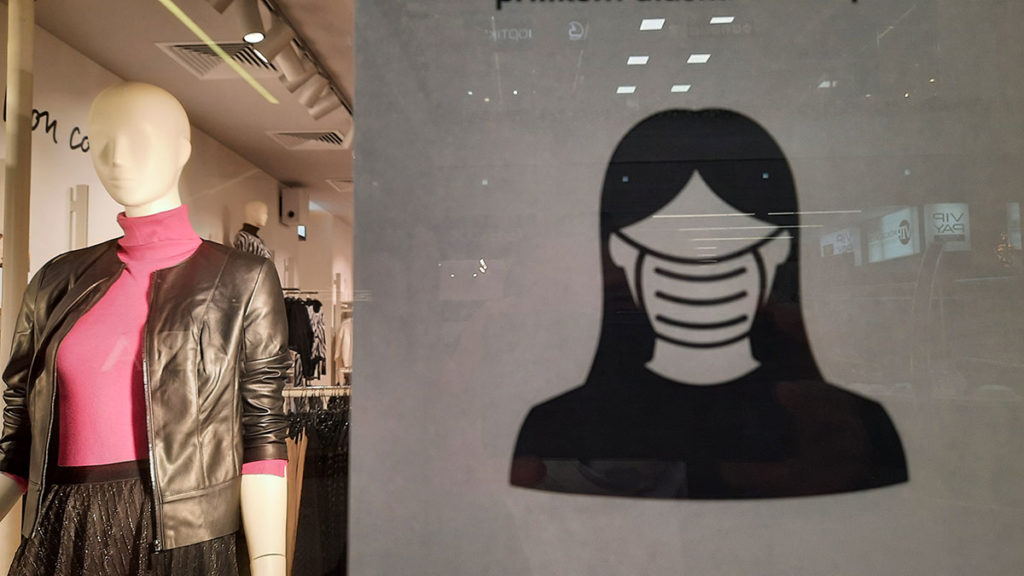
“A single death is a tragedy, a million deaths a statistic.” (paraphrase of Joseph Stalin)
This year we have discovered the coldly statistical nature of the mass death event that is the Covid-19 pandemic. There may be real lives hanging in the balance, real people gasping for breath, the real bereaved left behind, but the science of epidemiology relies, not on the stories of real individuals, but on numbers. And we have all become masters of them, poring over them like runes: number of tests carried out, number of infections, positivity rates, percentage of ICU capacity available, daily deaths, daily death rates per capita. In this last statistic, Slovenia has often had, during the second surge of this past autumn, the dubious distinction of leading the world.
As I study the runes each day trying to puzzle out our fate, how long we will be living like this, I read the news not just in Slovenian media outlets, but in other sources around the world. As an American who lived for many years in New York City and San Francisco and still has friends and family there, I take a particular interest in outbreaks of the epidemic in these cities, searching for clues in The New York Times and the San Francisco Chronicle. I also regularly read The Guardian, which covers the specificities of the pandemic in Great Britain and in other European countries. Recently I have been struck by a remarkable difference in the coverage of the epidemic in these publications and in their Slovenian counterparts.
On December 3, 2020, for example, The New York Times ran an extended piece called “The Epicenter” about the early outbreak in Queens, New York, which, like Bergamo in northern Italy, bore the first brunt of the wave of a new disease crashing on our shores. The piece provided details about early victims of Covid-19 – Yimel, Rosa, Jack, Laura – and was an echo of the project “Portraits of Grief,” which individually commemorated those who died in the World Trade Center on 9/11. Several months before “The Epicenter” was published, on May 24, 2020, when the United States passed the threshold of one hundred thousand Covid-19 deaths, the entire cover of The New York Times was blanketed with dense columns of the names of the dead. It was the American architect, Maya Lin, and her Vietnam war memorial entitled “Vietnam Memorial Wall” – eight thousand square meters of black granite engraved with the names of the war dead – that brought this democratized style of commemoration, evoking both the sheer number of the dead and their individuality, into fashion.
The Slovenian media, in contrast, has made no attempt, in any style or genre, to commemorate our Covid-19 dead, which will have surely exceeded two thousand by the time this column goes to print. To be sure, the Covid-19 pandemic has an optics problem, a storytelling problem. Its victims die in hospitals or long-term care facilities. They are often intubated and alone, their caregivers (whose heroism is also not particularly highlighted in the Slovenian media as it has been elsewhere) are obscured behind masks and protective gear. There may be cultural differences between the Slovenian media landscape and those of the other countries mentioned here. There may be issues of privacy. And yet the near total absence of any public recognition of or tribute to the dead, leaves a strange void in our midst, a strange silence. Certain emotions thrive in this sort of bloodless, airless atmosphere: fear rather than compassion, anger rather than sadness, alienation rather than solidarity. Thus, our responses to our present-day plague are all too often reduced from the level of tragedy – the lonely deaths of so many of our fellow human beings, our fellow countrymen, the loss of so much – to mere politicking.
What’s more, the blank space at the centre of the Covid-19 epidemic provides the ideal empty slate onto which madmen can project their fantasies. We need only think of Aleksander Skorc’s column in the right-publication Demokracija, and his pornographic visions of a plague brought down by a vengeful, righteous, and racist god that would kill black, brown, and yellow people. Skorc needs the empty space the Slovenian media have given him in order to conjure his sick daydream. He needs the dead to be invisible, with no faces, no names. We do not read about the Slovenian dead in the newspapers, we only see the numbers, but I suspect that they are not black or brown or yellow. I suspect they are not godless heathens. Most of them are probably white and Christian. Most of them are probably old and ordinary, and look like our parents or our grandparents. Perhaps according to Skorc’s hierarchy of human value, they too are “weeds,” having outlived their usefulness, and can be tossed onto the compost heap with no regret, no tribute, no recognition of who they were, that they were.
In the not-too-distant past, I became closely acquainted with death, and with the chaos and pain of loss, and I must confess that I find neither of the two journalistic genres of public tribute described above entirely satisfactory, neither entirely equal to the task. The thumb-nail sketches of the dead and the people who loved them, like the ones in The New York Times, are often too abbreviated, banal, even sentimental to capture the grand arc and complexity of an individual human life, however modest, or the terrible sense of loss of those left behind. The more artistic spatial displays of names, such as the “Vietnam Memorial Wall,” are aesthetic and democratizing but they strike me as overly conceptual, textual, flat and cold. They lack contour. They lack flesh. They lack tears.
But, however lacking, both of these kinds of public tributes are better than nothing.
And nothing is what we have here.
Peščanik.net, 15.12.2020.


